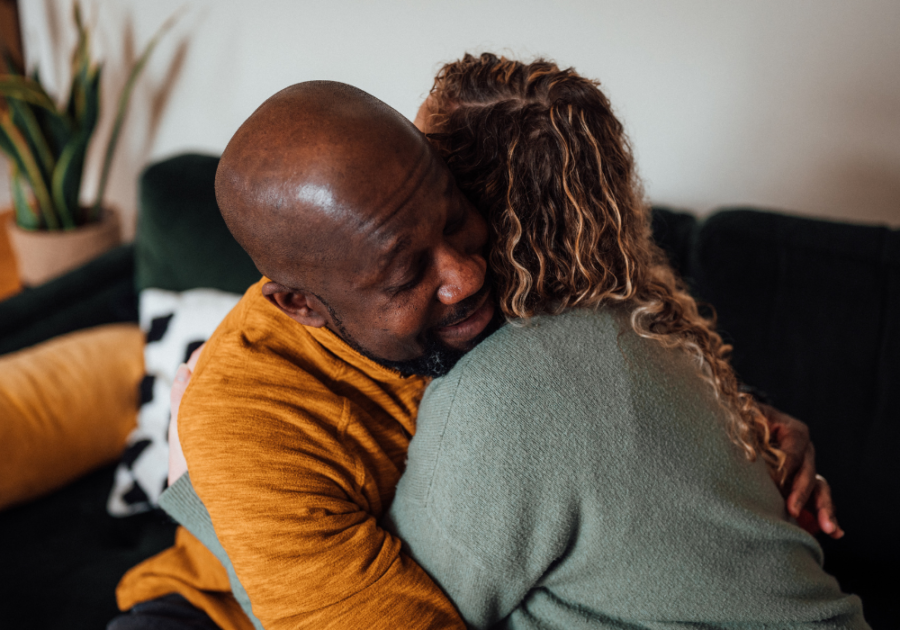Does emotional availability feel like a distant concept out of your reach?
You’re not alone.
Navigating our feelings and expressing them openly can be daunting.
Yet, it is essential for forging deeper relationships and enjoying emotional health.
Let’s unveil 17 practical strategies to enhance your emotional receptiveness and tear down the walls of fear and hesitation.
We’ll explore the profound world of emotional authenticity, vulnerability, and connection, one step at a time.
Unraveling Emotional Availability: The Art of Being Present and Engaged
What does it mean to be emotionally available?
At its core, emotional availability refers to the capacity to share your feelings openly, listen actively, and respond empathetically to another person’s emotional experiences.

It’s about letting your guard down and allowing yourself to experience a full range of emotions without pushing them aside or burying them under layers of denial or defense mechanisms.
The hallmarks of emotional availability encompass a broad spectrum of behaviors and attitudes:
- Active Listening: This means truly hearing and understanding the emotions of others, not merely waiting for your turn to speak.
- Vulnerability: It involves the courage to convey your feelings and needs without fear of judgment or rejection.
- Empathy: This is the ability to feel with others, understanding their emotions on a deeply personal level.
- Responsiveness: Responding appropriately to others’ emotions, providing comfort, and validating their experiences.
- Self-Awareness: It’s about recognizing and understanding your own emotions, thus enhancing your emotional intelligence.
In essence, being emotionally available means being fully present — with yourself and others.
It involves creating a safe emotional space where authentic communication can flourish, fostering deeper and more meaningful relationships.
How to Be Emotionally Available With These 17 Actions
Let’s dive into the heart of the matter—your journey toward being a more vulnerable person.
These transformative actions will guide you towards a more empathetic, responsive, and authentic emotional life, empowering you to foster stronger, healthier connections.
1. Embrace Self-Acceptance
Start with acknowledging and accepting your feelings, for they make you human. This isn’t about always being pleased with your actions or emotions but about recognizing that they’re a part of you.
Self-acceptance is the cornerstone of emotional availability because it removes the fear of confronting and communicating your feelings. By accepting yourself fully, you lay the groundwork for openness with others, fostering a sense of inner peace that helps create secure emotional spaces.
2. Practice Mindfulness
Incorporating mindfulness into your daily routine can ground you in the present moment and heighten your awareness of your feelings as they arise. This enhanced self-awareness can prevent emotional build-up and facilitate better communication.
Instead of reacting impulsively to emotions, mindfulness teaches you to respond thoughtfully, bringing clarity and balance to your emotional life. By consistently practicing mindfulness, you nurture your ability to articulate and respond to emotions clearly and compassionately.
3. Foster Self-Compassion
Embracing self-compassion means treating yourself with kindness and understanding when confronting personal failings or mistakes. It can help eliminate the self-judgment that often stifles emotional expression.
Acknowledge that everyone has imperfections and experiences challenging emotions. By cultivating self-compassion, you foster an environment where emotions can be freely acknowledged, accepted, and articulated, paving the way for increased emotional availability.
4. Develop Emotional Literacy
Being emotionally literate involves understanding and being able to articulate your own emotions. This skill makes it easier to recognize and manage your emotional responses. Start by naming your feelings and understanding what triggers them.
Keep a journal to track your emotional journey, which can provide valuable insights into your emotional patterns. With increased emotional literacy, you gain control over your emotional responses, making it easier to communicate your emotions to others and build deeper connections.
5. Strengthen Your Emotional Resilience
Building emotional resilience involves enhancing your ability to bounce back from emotional hardships. It teaches you to handle stress and adversity more effectively, preventing emotional shutdown in challenging situations.
Resilience doesn’t mean ignoring negative emotions; instead, it’s about accepting them and moving forward. Through activities like meditation, exercise, and seeking social support, you can fortify your emotional resilience, promoting transparency and willingness to engage emotionally with others.
6. Practice Active Listening
Active listening is a crucial part of being emotionally available. It involves not just hearing but truly understanding someone else’s feelings. When you listen actively, you’re fully present and focused on the other person, devoid of any preconceived notions or judgments.
This active engagement creates a healthy and receptive environment for them to express their emotions and signals their feelings are valued and understood. Cultivating this skill can foster trust and respect and deepen your emotional bonds.
7. Cultivate Empathy
Empathy is the ability to understand and share the feelings of others. By putting yourself in someone else’s shoes, you gain a deeper understanding of their experiences. It’s more than mere sympathy—it involves connecting with others on a deeper emotional level.

Cultivating empathy requires practice, tolerance, and open-mindedness, but the rewards are invaluable, leading to enriched emotional interactions and stronger, more genuine connections.
8. Prioritize Emotional Self-Care
Your emotional health is paramount. By prioritizing emotional self-care, you ensure that your emotional needs are met, enabling you to be more present and available for others. This can involve a range of activities, from pursuing hobbies you love to setting healthy boundaries to seeking professional help if needed.
By caring for your emotional health, you equip yourself with the strength and capacity to be more emotionally available to others.
9. Develop Healthy Coping Mechanisms
Life is filled with ups and downs. Developing healthy coping mechanisms helps you navigate through these fluctuations without repressing or ignoring your feelings. Techniques such as deep breathing, meditation, or engaging in physical activity can prove helpful.
When you manage stress and difficult emotions effectively, you maintain your emotional equilibrium, making you more available to connect with others.
10. Embrace Vulnerability
Vulnerability involves the courage to express your feelings and needs without fear of judgment or rejection. It may feel risky, but it’s a fundamental aspect of this mindset. Embracing vulnerability requires a shift in perspective—seeing it not as a weakness but as a strength that enhances authenticity.
Learn to be more real and vulnerable, and you create deeper, more meaningful relationships, creating an environment of mutual trust and honesty that forms the backbone of emotional availability.
11. Engage in Emotional Detox
An emotional detox involves taking time to clear out unwanted or negative emotions that might be hindering your emotional openness. It’s about acknowledging, processing, and letting go of emotional baggage that weighs you down.
This might involve journaling, mindfulness exercises, therapy, or other reflective activities. You will cleanse your emotional palette, making room for positive and constructive feelings and enhancing your capacity for emotional connection.
12. Foster Emotional Agility
Emotional agility is the ability to navigate life’s emotional twists and turns with flexibility and resilience. It means being able to experience and accept all of your emotions, whether positive or negative, without getting stuck or overwhelmed.
Developing emotional agility can involve practicing mindfulness, pursuing personal growth, and reframing your perspective on challenges. When you cultivate this skill, you become more adaptable and transparent in your emotional interactions.
13. Seek Professional Help If Needed
Sometimes, the road to this kind of vulnerability requires professional guidance. Therapists and counselors are equipped with the tools to help you explore your emotions and overcome potential roadblocks.
They can provide you with strategies to manage stress, build resilience, and improve emotional literacy. Don’t shy away from seeking help—it’s a sign of strength and a step towards becoming more emotionally available.
14. Cultivate Patience
Becoming emotionally available is a journey, not a destination. It takes time to unlearn old habits and cultivate new ones. Patience is key in this process, and it’s essential to give yourself grace as you navigate through this transformation.

Remember, small, consistent steps can lead to substantial changes over time. Celebrate your progress, be gentle with your setbacks, and don’t rush the process – patience will make your journey toward emotional availability smoother and more fulfilling.
15. Practice Regular Reflection
Taking time each day to reflect on your emotions and your responses to them can be a powerful tool in your journey toward being more unguarded. This regular introspection can help you understand your emotional patterns, identify areas where you can improve, and celebrate your progress.
It can be as simple as meditating at the end of the day. Incorporating reflection into your routine helps you enhance your emotional self-awareness, a fundamental step towards increasing emotional availability.
16. Encourage Emotional Conversations
Creating a safe environment for emotional conversations is crucial in enhancing your emotional responsiveness. Encourage these discussions in your relationships, showing you’re willingness to explore feelings together.
This promotes mutual understanding and emotional connection. You not only become more emotionally available yourself but also encourage the same in others.
17. Build Trust in Relationships
Trust is the bedrock of emotional availability. It provides a safe environment for you to express your emotions without fear of judgment or criticism. Building trust in your relationships involves being reliable, maintaining confidentiality, showing empathy, and being honest.
The more trust you cultivate, the more emotionally available you can become, paving the way for healthier and deeper emotional connections.
More Related Articles
Cut the Chatter With These 21 Practical Tips To Stop Talking So Much
9 Types Of Intimacy In A Relationship Every Couple Should Understand
11 Top Signs Of An Emotionally Stunted Man
Why Is It Hard for Me to Be Emotionally Available?
The journey toward this openness is not always smooth sailing. You may encounter hurdles that make it difficult to reveal or receive emotions freely. Understanding these challenges is the first step to overcoming them.
Several factors could contribute to difficulties in being closed off:
- Past Trauma: Previous emotional wounds or traumatic experiences can create a fear of vulnerability, causing one to build emotional walls as a defense mechanism.
- Lack of Role Models: Not having had examples of relational openness during your formative years can make it challenging to understand and practice it in your own life.
- Fear of Rejection: The fear of being rejected or misunderstood can often deter one from sharing their emotions openly.
- Poor Self-Esteem: People with low self-esteem may struggle with being emotionally expressive because they may not value their own feelings or believe they’re worthy of emotional connection.
- Cultural or Societal Expectations: Certain cultural or societal norms can stifle emotional realness, especially in those who’ve been taught to suppress their feelings.
Navigating these barriers can seem overwhelming, but it’s important to remember that each step you take toward deeper connections, no matter how small, is a step in the right direction.
Overcoming these obstacles often involves self-reflection, patience, and sometimes professional help. Rest assured, the rewards of becoming more emotionally available—a more fulfilling relationship with yourself and others—are well worth the effort.
Final Thoughts
Embarking on the path of emotional availability is akin to a journey of self-discovery. It unveils the layers of your emotional being, fosters empathy, and strengthens your connections. Embrace this transformative process, for it’s an investment in your emotional health, well-being, and the quality of your relationships.














